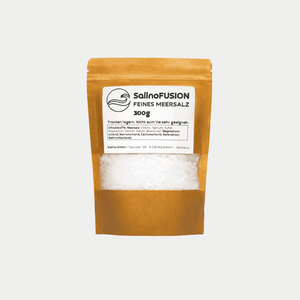There are days when work feels like a gentle flow. Thoughts flow, ideas emerge, tasks almost solve themselves. And then there are days when just looking at the screen takes energy. Often, the difference lies not in the job itself – but in the space in which we perform it.
The design of our work environment influences far more than just our productivity. It determines how we feel, how focused we are, whether we enjoy sitting at our desks—or whether we prefer to walk away. In times of home offices and hybrid work models, a question that used to primarily concern interior designers is coming into focus: How do I create an atmosphere in which I enjoy working?
In this article, I'll take you on a journey through seven dimensions of interior design that will make your workplace not only more functional, but also more livable—whether at home, in the office, or somewhere in between. It's not about design trends or furniture shopping. It's about light. About air. About sound. About small interventions with big impact. And about what's often forgotten between the walls and the chairs: your well-being.
Are you ready to rethink your workplace?
1. Light is more than brightness – how daylight influences your mood
 It often begins inconspicuously: a gray morning, artificial overhead light, the monitor as the only source of light. But what sounds banal can have a profound impact on our well-being. Because light isn't just a matter of brightness—it's a biological stimulus.
It often begins inconspicuously: a gray morning, artificial overhead light, the monitor as the only source of light. But what sounds banal can have a profound impact on our well-being. Because light isn't just a matter of brightness—it's a biological stimulus.
Our bodies react to light in much the same way they react to food or exercise. Daylight controls our internal clock, influences our hormone levels, and helps determine whether we are alert, focused, and energetic—or sluggish, irritable, and exhausted.
People who don't get enough natural light during the day produce less serotonin. The result: difficulty concentrating, low moods, and a feeling of listlessness. This becomes a real problem, especially when working from home—often in north-facing urban apartments.
What helps?
Work as close to a window as possible. Even diffused daylight is better than any lamp. Mirrors or light-colored walls can help diffuse the light more effectively in the room.
Avoid bright overhead light during the day. Instead, use an indirect desk lamp with adjustable color temperature. The light can be cool and stimulating in the morning and warmer in the afternoon to relax your eyes.
Get outside whenever possible. A short walk during your lunch break works wonders. Not only for your energy levels, but also for your mental clarity.
Those who consciously design their lighting environment will quickly notice the difference. Not only in productivity, but also in the feeling that comes with starting work.
2. The sound of the room – How acoustics shape your concentration
 Imagine you're working on an important text. Suddenly, a door slams, a cell phone vibrates, voices come from the hallway. Every noise cuts through your flow of thought like a knife through paper. Concentration requires silence—or at least an acoustic environment that supports calm.
Imagine you're working on an important text. Suddenly, a door slams, a cell phone vibrates, voices come from the hallway. Every noise cuts through your flow of thought like a knife through paper. Concentration requires silence—or at least an acoustic environment that supports calm.
Many people underestimate the extent to which acoustic stimuli influence their daily work routine. Especially in the home office, where the kitchen, children, and neighbors are just a wall away, sound becomes an underestimated barrier to productivity.
How can this be improved?
Textiles are your allies. Curtains, rugs, and cushions – they dampen reverberation and noticeably reduce noise levels.
Plants can be more than just green. Large leaves absorb sound waves and improve room acoustics – all without technology.
Use targeted soundscapes. Quiet natural sounds or white noise help some people block out distractions and work more deeply. It's worth trying out different soundscapes—your brain will tell you what works.
Acoustics are intangible – but they can be felt. They often unnoticed determine whether you stay in your room or flee.
3. Room temperature & air quality – How you breathe your energy level
 Who hasn't experienced it? The heating is humming, the air is still, and your head feels heavy. Or the other way around: Your fingers are cold, your back is freezing, and you start to cramp up after just a short while. Room temperature and air quality act like invisible directors of your everyday work – they determine whether you feel alert and clear-headed or sluggish and exhausted.
Who hasn't experienced it? The heating is humming, the air is still, and your head feels heavy. Or the other way around: Your fingers are cold, your back is freezing, and you start to cramp up after just a short while. Room temperature and air quality act like invisible directors of your everyday work – they determine whether you feel alert and clear-headed or sluggish and exhausted.
Especially when working in a concentrated manner, our bodies react sensitively to even the slightest changes in climate. Even air that's too dry can irritate mucous membranes, strain our voices, and lead to headaches. CO₂ concentrations also often rise unnoticed when we work in the same room for long periods – with noticeable consequences for our attention and mood.
What can you do?
Ventilation is more than just fresh air—it's mental hygiene. Ventilate several times a day, not just tilt the windows. If you want to measure CO₂, you can use a small air sensor—they're inexpensive and informative.
Optimize your air quality . Houseplants like peace lilies and spider plants help reduce pollutants and improve the indoor climate. They look good – and do good.
Use targeted humidification – but consciously. Dry air from heating can be particularly stressful in winter. A passive, filterless solution like a mini saline bath that releases saline moisture can be a soothing aid – more on that later.
Temperature is individual – find your comfort zone. Studies show that around 22 degrees Celsius is optimal for many people. But what's important is what feels good to you. Make sure your feet are warm and your shoulders are flexible – this not only promotes a sense of well-being, but also improves your posture.
The quality of the air you breathe reflects the quality of your thoughts. Those who breathe freely think more clearly.
4. Order without constraint – How visual calm sorts your thoughts
Chaos on the desk, papers everywhere, tangled cables and half-full cups: Sounds like creativity – or mental interference?
Visual clutter acts like background noise for our brains. Even if we don't consciously notice it, we process every object in our field of vision. The result: mental overload, distraction, and a feeling of restlessness. A tidy room, on the other hand, can act like a clean notebook—ready for new thoughts.
But order isn't the same as minimalism. It's not about sterile perfection, but rather a system that serves you.
What does that look like in concrete terms?
- Store things you don't need – visibly or invisibly. Open shelves with boxes or baskets help keep things quickly accessible while still creating a visually calming effect.
- Define designated zones for cables, technology, and documents. It sounds simple, but it's often the most effective way to do it.
- Work with materials that appeal to you. Wood, ceramics, fabric – they create a feeling of homeliness that a traditional office desk rarely achieves.
Order in your space isn't an end in itself. It's an invitation to your mind to focus on what's essential.
5. Show your personality – Why your workplace can be you
 A neutral desk, a white screen, an ergonomic chair—functional, but soulless? Those who optimize their work solely through technical equipment often lose what drives us as human beings: connection, identification, emotion.
A neutral desk, a white screen, an ergonomic chair—functional, but soulless? Those who optimize their work solely through technical equipment often lose what drives us as human beings: connection, identification, emotion.
Boundaries blur, especially in a home office. The place where you work is often also the place where you live, think, and feel. Consciously shaping it with personal expression—be it through photos, quotes, colors, or objects with a story—anchors you emotionally. It creates a small territory that speaks to you.
Psychologists talk about "emotional ownership": spaces that have personal connections activate our motivation more strongly. Because where we feel seen, we prefer to work.
It's important to remember that personality doesn't mean distraction. Too much decoration can be overwhelming. But a purposeful element—a picture that inspires you, a cup from your childhood, a scent that focuses you—can make all the difference.
Your workplace is more than just a place. It reflects your attitude toward life—and toward yourself.
6. Rituals of Return – How to re-enter your space again and again
Perhaps the most subtle but powerful path to a better workplace is this: to see space not just as a place, but as a transition.
When you enter a room, you also enter a different role. From parent to manager. From partner to copywriter. From self to function. This transition is easier if you establish conscious rituals that mark the transition.
Opening a window. Playing a specific song. Applying a scented spray. Setting a mood lighting. All of these can act as a start button. And at the end of the day, another one that brings you back – to the private, the soft, the open.
Especially in the home office, such barriers often disappear. The desk remains visible, the calendar is always online. This makes it all the more important to set boundaries – not with walls, but with gestures.
Because a good workplace isn't just well-designed. It's well-framed.
Conclusion: The room as a resonance body for your work
A workplace is not a static place. It lives with you – in your rhythm, your needs, your everyday life. Those who consciously design it not only shape the furniture or storage, but also their own day, their own focus, their own sense of meaning and presence.
You don't have to create a design icon. You don't have to buy expensive furnishings. It's often the small changes – the light that greets you in the morning. The plant that absorbs sound. The silence that lets you think. The order that calms you. And the personal touch that says: You're in the right place.
If you also want to pay attention to air quality—especially in enclosed spaces without much fresh air—a saline air system can be a silent support. A mini saline system like the SalinoVatis model works without filters and noise, operates passively, and releases mineral-rich moisture into the environment for hours. Not as a promise of healing, but as an option for a more pleasant indoor climate.
Because in the end, that’s exactly what it’s all about: creating spaces that not only create work – but also well-being.


